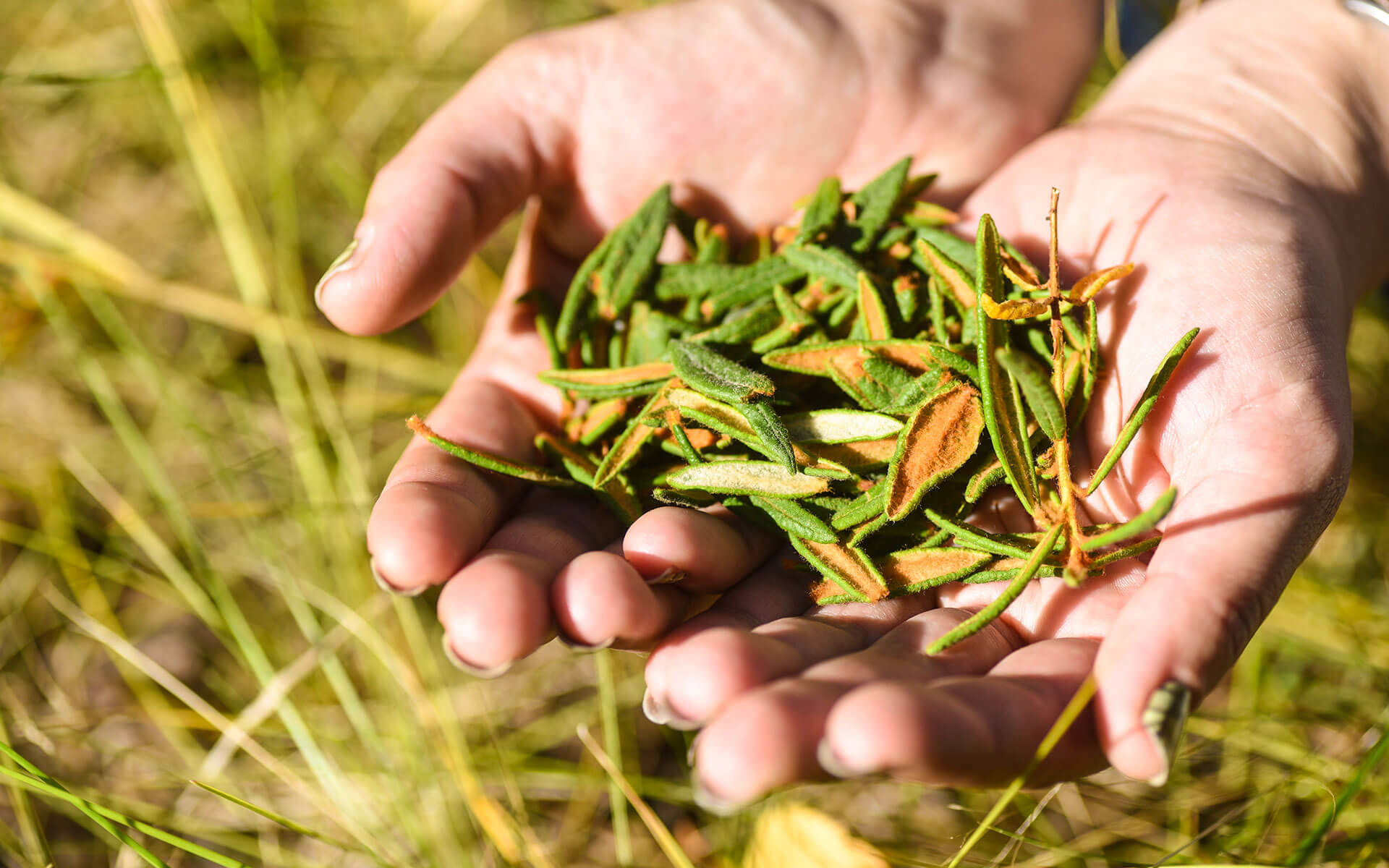Study looks at impact of herbicide on traditional plants in boreal forests
Athabasca University researchers partner with Bigstone Cree Nation to study impact of glyphosate on Labrador tea
For the past 15 years, Bigstone Cree Nation Elder Helen Noskiye has operated a trap line in the boreal forest in northern Alberta, in an area north of Chipewyan Lake near the Wabasca River.
In that time, logging companies have cleared a lot of timber and reforested vast stretches of land. They spray the herbicide glyphosate on broadleaf plants and shrubs to help newly planted trees thrive. This spraying includes traditional plants and medicines such as Labrador tea, chokecherries, and raspberries, which have been consumed for generations by the sakawiyiniwak, or Northern Bush Cree.
“Once they do the spraying, people can’t pick the berries anymore because it’s poisonous,” Noskiye said. “There’s nothing trappers can do because the companies overrule them, I guess.”
Athabasca University (AU) researchers Dr. Srijak Bhatnagar and Dr. Janelle Baker are leading a study with members of Bigstone Cree Nation to better understand the impact of glyphosate on the health of broad-leaf plants, using Labrador tea as an example.
Once they do the spraying, people can’t pick the berries anymore because it’s poisonous. Elder Helen Noskiye of Bigstone Cree Nation

Related: Protecting boreal plant species is a critical part of reconciliation efforts
Labrador tea an important traditional medicine
Labrador tea is an important traditional food and medicine that’s used to treat ailments like headaches, inflammation, asthma, and heart problems.
Combining Traditional Indigenous Knowledge and lab-based research, the team is addressing long-standing concerns in the community about industry’s impact on traditional food sources.
“This is research that will be directly useful to other First Nations with the same concerns—which are a lot of them,” said Baker, an associate professor and cultural and environmental anthropologist in the Faculty of Humanities and Social Sciences.
Microbes yield clues about health of organisms
To understand how glyphosate affects traditional plants, the team will look at which microbes are present in the roots of Labrador tea, which grows throughout the boreal forest in northern Canada.
“Every living thing has microbes. We have microbes living in our skin, in our mouth, in our gut. These plants also have microbes living everywhere,” explained Bhatnagar, an assistant professor of microbial ecology and computational biology in the Faculty of Science and Technology.
The research team is working with Traditional Knowledge Keepers in Bigstone Cree Nation to identify microbes present on plants found in areas sprayed with glyphosate compared to those found in unsprayed areas. Bhatnagar said existing research has found the presence of glyphosate in berries foraged in boreal regions.
“We know from other plants that the herbicide affects the microbial community of the plant that in turn can negatively affect the health of the plant,” he said.
Does glyphosate in Labrador tea affect human health?
The study will also look at how consuming Labrador tea could affect human health. Collaborators at McMaster University will expose human cells grown in petri dishes to teas from plants gathered in both sprayed and unsprayed areas.
“They will expose those cells to the teas brewed in the traditional way,” Bhatnagar said. “Basically, we’re going to try to see if glyphosate or it’s effect can be detected.”
He said the team chose to study Labrador tea because of the community concerns, but also because it’s so common throughout boreal forests. The team hopes the results can be used as a model for understanding the implications of glyphosate for other plants and other communities.

Related: Solving big problems with tiny microbes
Implications for truth and reconciliation
The results of the study could have broader implications for reforestation practices—and for truth and reconciliation in Canada, said Baker. She has worked extensively with Bigstone Cree Nation and other Indigenous communities to study industrial contamination of traditional foods and water sources.
Plants like Labrador tea, fireweed, and chokecherry are common throughout the boreal forest and are classified as weeds. So when former industrial sites are reforested, companies fail to recognize the cultural value of these plants, she said.
“If we really want to have truth and reconciliation, we need to start paying attention to Indigenous Laws and Indigenous Systems of how to interact with these species.”
The research is being funded in part through a New Frontiers in Research Fund 2022 Exploration grant, overseen by the Social Sciences and Humanities Research Council.